Computer hard drive labeling. What is the difference between "color" hard drives Western Digital
Hi, Giktayms!
Today we have an unusual material, article educational program: we choose the right HDD, depending on the intended use scenarios. The fact is that manufacturers have produced a whole bunch of different lines, and if you do not follow the topic regularly, after a year and a half, you can easily forget which series it belongs to, why you need it and how it differs.
This post would be incomplete without a small theoretical part, so let's start.
HDD device
All hard drives are roughly the same. Inside there are one or more pancakes, driven by a high-speed motor, and a block of reading heads. All this is hidden in an airtight area, where there is no dust. Next to the "mechanics", you can find several chips and circuit boards, but they are rather related to control electronics than directly to the storage of information.
In this image - an old Seagate from the late 90s. Constructively, almost nothing has changed since then. When the disk spins up to the minimum allowable design speed, the control unit displays the head in working position, and the reading element begins to "float" in fractions of a millimeter above the magnetic surface of pancakes.
At this stage, the number of revolutions per minute for the “pancake” drive can differ, as well as the number of plates on which the information is stored. Reading heads are mounted on a kind of “comb” fixed between the magnetic plates. Usually they are twice as large as the plates (although there are exceptions), they all move together. The number of plates themselves almost always directly depends on the disk size, but modern technologies allow to “push” more and more information per square millimeter, increasing the “density” of information in the most direct sense. Thus, for example, you can find an old 1 TB hard drive with three “pancakes” of 333 GB each, and you can find a new 1.5 TB HDD with two, but 750 each.
Hard drive manufacturers
Four major brands are now represented in our store: Western Digital, Seagate, Hitachi HGST (Purchased by WD) and Toshiba. Samsung also had its hard drive production (and there are many more who, there are more than 200 HDD companies on Wikipedia), but there are even fewer actual iron producers. Only Seagate, WD and Toshiba have their own assembly lines. All other companies, one way or another, were either bought by major manufacturers or left the HDD market.What are the hdd
It would seem that the hard disk and hard disk, chose the right amount, looked at the price, satisfied - went and bought. Naturally, everything in life is somewhat more complicated. Parameters for hard drives are greater than the "price" and "how much it fit."The main characteristics of the HDD are:
Capacity - in fact, “how much does it fit” - this value characterizes the amount of information that can be written to disk. At the same time, cunning manufacturers use decimal prefixes of the usual metric system: they have 1000 bytes in 1 kilobyte, a million megabytes, respectively, in a megabyte, and a trillion in a terabyte. In the operating system, kilobytes, megabytes, and other units of measure are multiples of 1024. Because of this seemingly small difference, a decent “error” accumulates, of course, not in our favor: if the beautiful disk label shows a capacity of 1 terabyte , then in practice, approximately 931-932 GB of usable space is available to the user.
Spindle speed - the main characteristic responsible for the speed of the disk when sequentially reading or writing information. The faster the motor rotates, the faster it flies under the “head” of the pancake sector. The main popular values are 5400, 7200, 10000 and 15000 revolutions per minute, although there are models with intermediate values.
Cache size - the volume of a special high-speed buffer in which files are deposited for reading or writing before the disk or the system performs the previous operation. The larger the amount of cache memory, the easier it is to work with a large number of small files.
Connection interface - communication method hard drive with the rest of your computer's hardware. The most popular today are SATA 2 (300) and SATA 3 (600) for “internal” drives, and USB 2.0 / 3.0 for “external” drives.
In most cases, the read and write speeds, the durability of the disk itself, noise levels, and power consumption depend on these hardware capabilities. The various combination of these characteristics allows the manufacturer to directly affect the speed and reliability properties of HDD. We are interested in the following indicators:
Number of I / O operations per second (Iops) - in a nutshell - the ability of the hard disk to read and write a certain number of blocks (usually 4 kilobytes) of information in one second. More information about this feature can be found in Wikipedia, the information in the article is simply exhaustive. Than more value IOPS - the faster the disk can perform file operations.
Random access time - that is, the time required for positioning the head of the reading / writing device on an arbitrary section of the magnetic disk. The smaller - the faster the “response” of the hard disk to system requests.
What can HDD be used for?
Nowadays high speed sSDs successfully win the role of system carriers. Despite the high price, rather modest (compared to HDD) capacities and the risk of irretrievable data loss, disks based on microchips (and not moving parts) increasingly become carriers of OS and software that is sensitive to the speed of data exchange with the disk. The fact is that their IOPS and random access times are several times higher than those of "classic" hard drives. Fortunately, it is too early to write off the time-tested technology. Firstly, in terms of the amount of information stored to the price, a hard disk has almost no equal, and even more so in home use. Secondly, the prices for SSDs were not the most joyful either, and now this crisis also ... In general, the HDD is still alive and alive. So how can you apply it?- As a universal disk “for everything”: systems, software, games, data storage;
- As a relatively small disk (from 300 GB to 1 TB) for applications that are sensitive to the speed of data exchange with the disk subsystem;
- As a disk for long-term storage of data that does not represent high value and does not require high access speeds: music, movies, photos, games, backups and everything that will work on the old hardware, even on the new one;
- Disk for use under torrent downloads. Usually I feel such disks either permanent (almost 24/7) or almost constant loads: forever something is written, something is read;
- Disk for long-term storage of important information.
The second group fights with SSD for the user's attention. On the one hand, there is no possibility for the “classics” to compete with the “hard drives”, on the other hand, even the simplest SSD is 64 gigabytes (enough for the system and the most important software) + the cheapest for HDD data cost more than one high-speed disk comparable volume. Such hard drives require high spindle speeds, good IOPS performance, reliable vibration and noise isolation.
To store information that can be obtained again (on the Internet, on another disk), the price / volume ratio comes out first. The speed characteristics in this case are not so important: even 4k2k-video, if you find one, will not forget all the bandwidth of the “slow” HDD.
The disks actively used for file exchange in peer-to-peer networks experience the greatest load: the torrent constantly reads something, writes something, does it not in order, often at the same time and “at the wrong time”. This, in principle, can be attributed, and any records from webcams, especially lasting 24/7. The key characteristic for such loads is durability and elements of HDD mechanics designed for such “hardships”: head drive, engine, spinning pancakes, control electronics.
Stand alone are the storage systems for important data. In fact, the best way save really important files - put them in the cloud, create backup copyto ensure that it is operational and regularly repeat both the diagnostics of the repositories and the operations back up. Of course, in the first place emerges reliability and reliability of the device.
HDD rulers
We will try to consider all models of hard drives in “similar” conditions - we take the 1 TB model as a basis.Let's start with the company's products Western digital. The company gave the families of discs “color” names, coloring the stickers in the appropriate colors.

In addition to the “color” series, WD has three more:
Seagate HDD.15 - a model designed to store data that is not critical to the speed of reading / reading. In many ways, an analogue of the WD Green line, but differs by a slightly higher spindle speed: 5900 revolutions per minute versus 5400 for "greens".
Unfortunately, we do not have prices for a terabyte, but there is a price for 4. ~ rubles for a quiet and cold disk that you get tired of filling up with information — not so much.
Seagate did not bother with high-speed data storage, but for the NAS and other heavily loaded disk conditions it is more than enough.
Second line HGST Deskstar NAS - designed for storage systems. Available volumes - from 3 to 6 TB, prices - from ~
Copywriting: 2$ Rewriting: 1$ Rating: 5More recently, acquiring hDD, the buyer paid attention only to its two characteristics - speed and volume. The remaining parameters, as a rule, did not play a large role, therefore, attention was hardly paid to them. However, over the past few years, the situation has changed radically and Western Digital has played a significant role in this, offering customers different versions of their products, dividing it for convenience by color.
Each color indicates which system and for which purpose disk usage is most appropriate:
- Blue wheels Wd blue able to provide basic performance. Such drives are universal and suitable for most systems.
- Drives WD Green With a green sticker, they are quiet and resistant to overheating.
- Discs Wd black designed for network drives.
- Wd purple best suited for smooth, high-load operation. Most often, these drives are installed in video surveillance systems.
- Discs Wd red ideal for organizing small servers or NAS.
The direct opposite of the WD Green series can be considered hard drives WD Black. Their main advantage is high performance, which was achieved thanks to high speed and 64 MB cache memory, which is controlled by a powerful dual processor. In addition, WD Black drives a new TLER technology, which minimizes the likelihood of sudden idleness of the RAID array caused by errors in one of the system drives. Necessary correction procedures will occur during system downtime.
The WD Red line also has 64 MB of cache memory, but is noticeably inferior in performance.
WD Purple drives, as already mentioned, are designed for high loads and smooth operation. These characteristics are key when choosing hard drives for video surveillance systems. WD Purple support AllFrame technology, which significantly reduces the likelihood of errors that can damage the image or lead to the loss of important frames.
The reliability of each disk, as stated by the manufacturer, can be guaranteed only when using the drive for its intended purpose.
Each color has its own characteristics, advantages, disadvantages and purpose.
We all used to choose such devices according to two criteria - capacity and price. That is, if you have enough money in your pocket for an item with a certain capacity, we buy it.
In fact, everything is much more complicated and the concept under consideration directly relates to the choice of railway.
Contents:
Classification
Everything is much easier than it might seem at first glance. The fact is that there are quite a few hard drive manufacturers and Western Digital is one of them.
But the management of this company decided to take a non-standard approach to the name of its product lines.
It uses not some words, but simply different colors. So there are such lines as WD Blue (that is blue), WD Green (green), WD Black (black) and others.
On the physical devices themselves there are stickers of the corresponding colors.
| Title | Purpose | Features | Price for HDD with capacity of 1 TB, USD | Average work speed, revolutions per minute |
|---|---|---|---|---|
| Blue | Universal | Balance between speed and reliability | 70$ | 7200 |
| Green | "Ecological" devices for those who appreciate the purity of the planet and the silence of work | Reduced energy consumption, noise and vibration low speed work | 80$ | 5400 |
| Black | for increased loads | Typically, Black Series Railways are used for installation. operating systemheavy games and programs | 90$ | 7200 |
| Red | for round-the-clock work mainly in network devices | Improved protection against damage and overheating, reduced energy consumption | 85$ | 5400 (manufacturer claims 7200) |
| Purple | Used in video surveillance systems | A lot of algorithms and programs are used to process video and improve its quality, protection from vibrations, while low speed and high volume work | 80$ | 5400 maximum (usually much less) |
Already on these characteristics, you can say a lot about these devices, but we will try to consider them in more detail.
Blue
As mentioned above, this is a universal category that fits all ordinary users. They are relatively inexpensive and fast.
The speed of work is achieved by. In this case, there are options with 16 or more MB of memory (there are less, but today there is simply no sense in such a small amount).
As for noise, it uses technology WhisperDrive, which reduces it. They are best suited for simple everyday tasks, perhaps for uncomplicated work in the office. For games and, as well as all sorts of calculations it is better to choose something more powerful.
A classic example of this line - WD10EZEX. Such a device costs just $ 72 with cents. Him characteristics are as follows:
- volume - 1 TB;
- interface - SATA;
- rotation - 7200 rpm;
- buffer size - 64 MB;
- form factor - 3.5 inches.
Green
The main difference from all the others is reduced energy consumption (40% lower, according to the company representatives).
Also, users write that such drives are quite reliable to use.
Be sure to say that it uses technology IntelliPower, which, in fact, reduces power consumption. Its meaning is to achieve an ideal ratio of rotational speeds and data transfer.
They are one of the "coolest" of their kind. This means that the temperature of their work is relatively low. They also have a lot. But the speed of work often suffers greatly because of all this.
As an example of a "green" drive, you can recall the WD20EZRX. The features of this sample are:
- volume - 2 TB;
- interface - SATA;
- buffer size - 64 MB;
- form factor - 3.5 inches.
The manufacturer does not indicate the rotation speed and simply write “IntelliPower”. In practice, it is 5400 rpm.
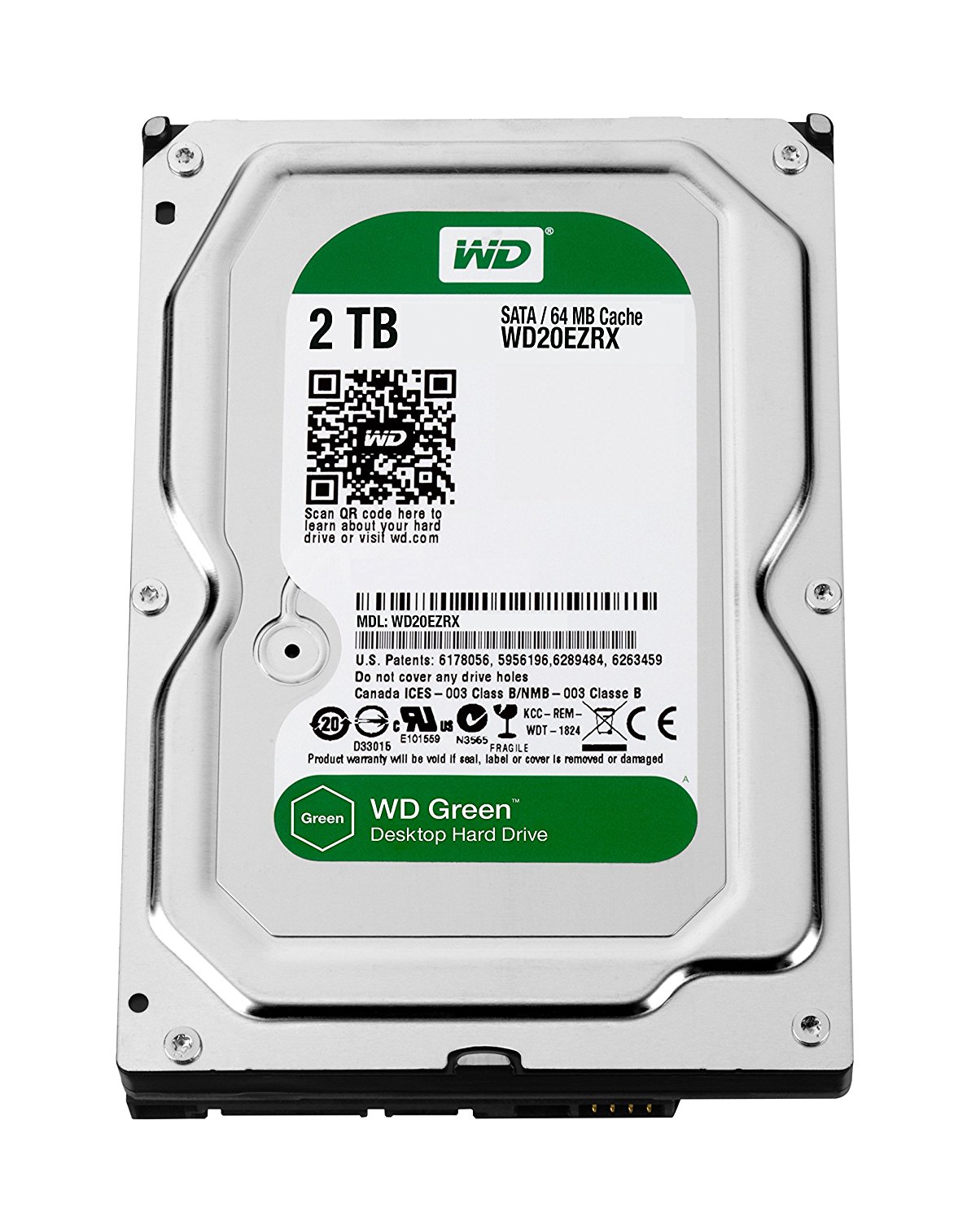
Black
These devices are quite suitable for performing all sorts of heavy tasks, such as mathematical modeling, and so on.
They can be used at home, but they are even too powerful for working on office tasks. on one of the WD Black Railways, it will simply fly like other similar programs.
7200 revolutions per minute - this is the minimum, sometimes more. In addition, these devices have excellent random access times.
Also, their distinguishing feature is the low temperature during operation and excellent protection against vibrations. Thanks to this and other interesting features, maximum work speed is achieved.
The volume here can reach 64 MB, which, again, increases the speed.
Also pay attention to the two-drive system for determining the location of the drive heads. Due to it, a very high accuracy of head placement is achieved, which is very important when working with data.
As a sample of this line, you can bring the model WD10JPLX at a price of $ 95. You can buy it in some stores for $ 50, but usually more ($ 100 or more). Here is her features:
Benefits include increased reliability as well as protection against damage, vibrations, and excessively high temperatures. Interestingly, the rotation speed is usually less than the manufacturer claims.
As a sample, take the model WD60EFRX. It is just designed for servers or network storage.
Price - $ 250 (may be more or less depending on the store). Her specifications:
- volume - 6 TB;
- interface - SATA;
- buffer size - 64 MB;
- form factor - 3.5 inches.
Here, “IntelliPower” is also written next to the rotation.
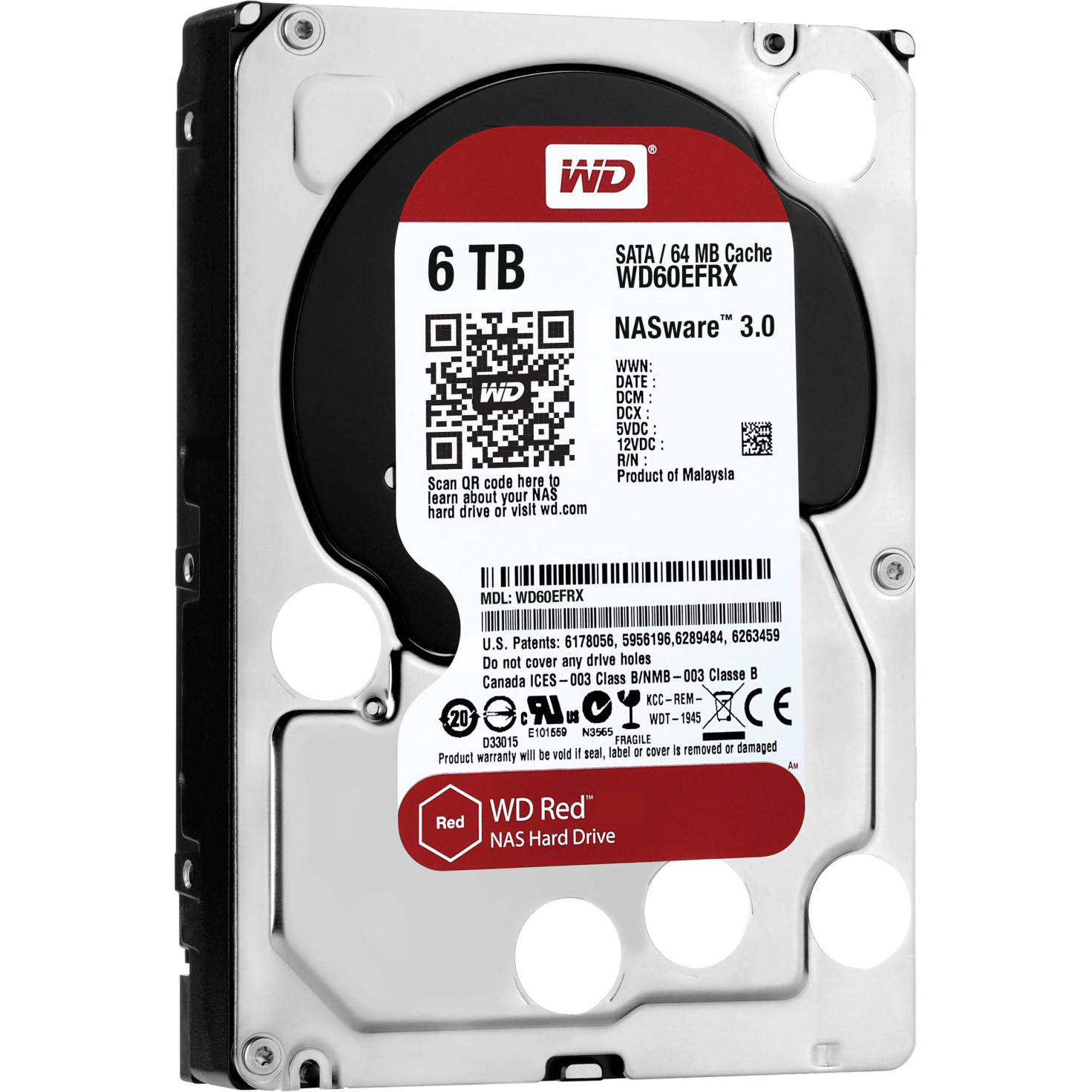
What are the differences between the colors of Western Digital drives? In this brief article we will tell you about all the series of WD hard drives.
WD Green

Silent operation with low power consumption. Budget series of disks designed for desktop computers. The disks have sufficient volumes and an attractive price, the speed of their rotation is within 5400-5900 Rev / min. Now the company Western Digital decided to rebrand the green series, combining it with the blue series (WD Blue). WD Green is no longer produced.
Wd blue
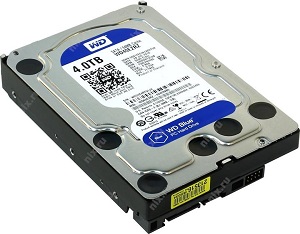
Stable performance and reliability for everyday use in a personal computer. Hard drives are available in volumes from 250 GB to 6 TB, with a rotation speed range from 5400 to 7200 RPM and a cache of 16, 32 and 64 MB. One of the most important innovations of this series was 1 TB magnetic plates, which increased the speed of the disc due to a higher recording density. Among the WD Blue series drives, there is the Blue SSHD model (solid-state hybrid drive), which combines a large amount of hard drives with the speed of a solid-state NAND flash drive. Blue SSHD is available in a 2.5-inch format for laptops and a 3.5-inch format for desktop computers. The first have a volume of 1 TB, and the second - 4 TB. The drives are equipped with 8 GB NAND flash memory and use a self-learning algorithm that stores frequently used data on the solid-state part of the disk. Blue HDD and Blue SSHD are connected via SATA 6 Gb / s interface.
Wd black
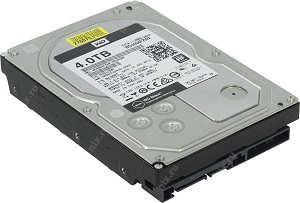
Top performance for desktops. The Black series is a high-end family of hard western drives Digital. Such disks offer volumes from 1 TB to 6 TB. The black disc series is known for its reliability and is suitable for both ordinary users and gamers or advanced users. Latest version a disk of this family of WD Black 6 TB with 128 MB cache shows much better results in comparison with previous version . The rotational speed of all disks of this product line is equal to 7200 RPM.
Black HDDs are among the most reliable desktop computers on the market. In our tests, WD Black demonstrated a data transfer rate of 180 MB / s and an access time of 8.5 ms.
Wd purple
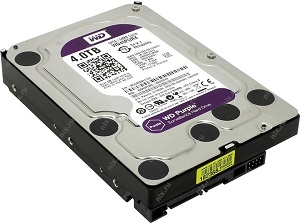
Purple series is designed for video surveillance systems. IntelliPower RPM technology allows series drives to change their rotational speed from 5400 to 7200 RPM, thereby reducing power consumption and increasing the hard drive resource.
Wd red pro
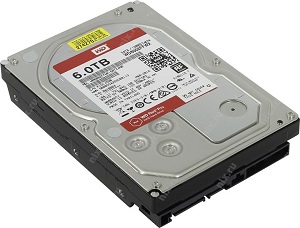
Performance and reliability. The series is designed for network attached storage (NAS), but is also perfect for your desktop computer. Compared to WD Black, these drives are quieter and more reliable, but also significantly more expensive.
According to the test results, WD Red Pro transmits data at a speed of 180 MB / s, and access time is 8.5 ms - the same results as the Black series, but Red Pro is much quieter thanks to the built-in vibration cancellation system.\u003e / P\u003e
WD Gold
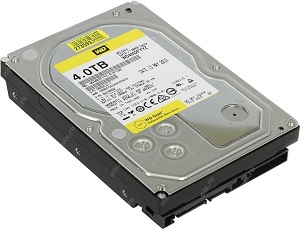
HDDs are designed for servers and are able to withstand loads of up to 550 TB per year. All products in this series have increased reliability and an average mean time to failure of 2 million hours, twice as large as the WD Black or WD Red Pro series. The performance of the disks under consideration is at the level of the Black and Red families, is it worth overpaying for WD Gold? It all depends on your needs, but if you plan to install a disk in a regular computer, the Black and Red series will provide the same performance for less money.
